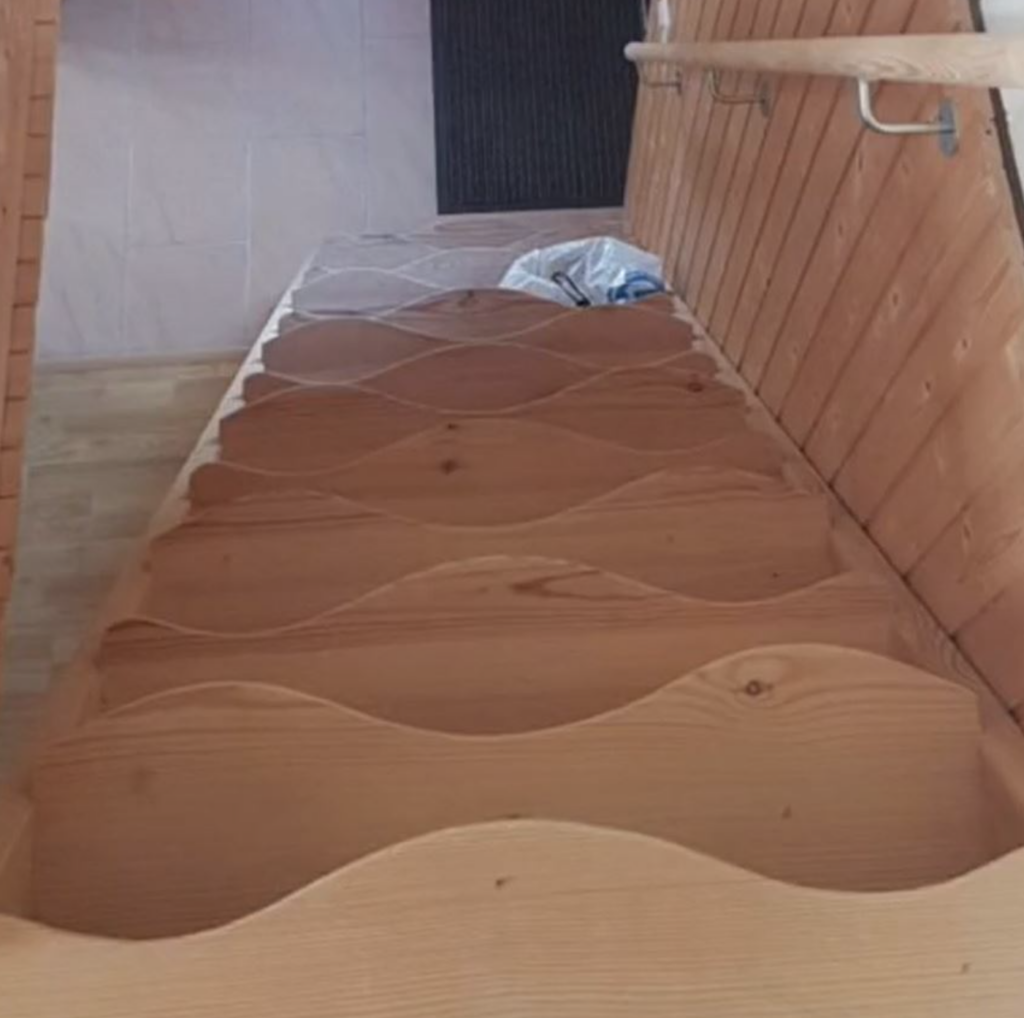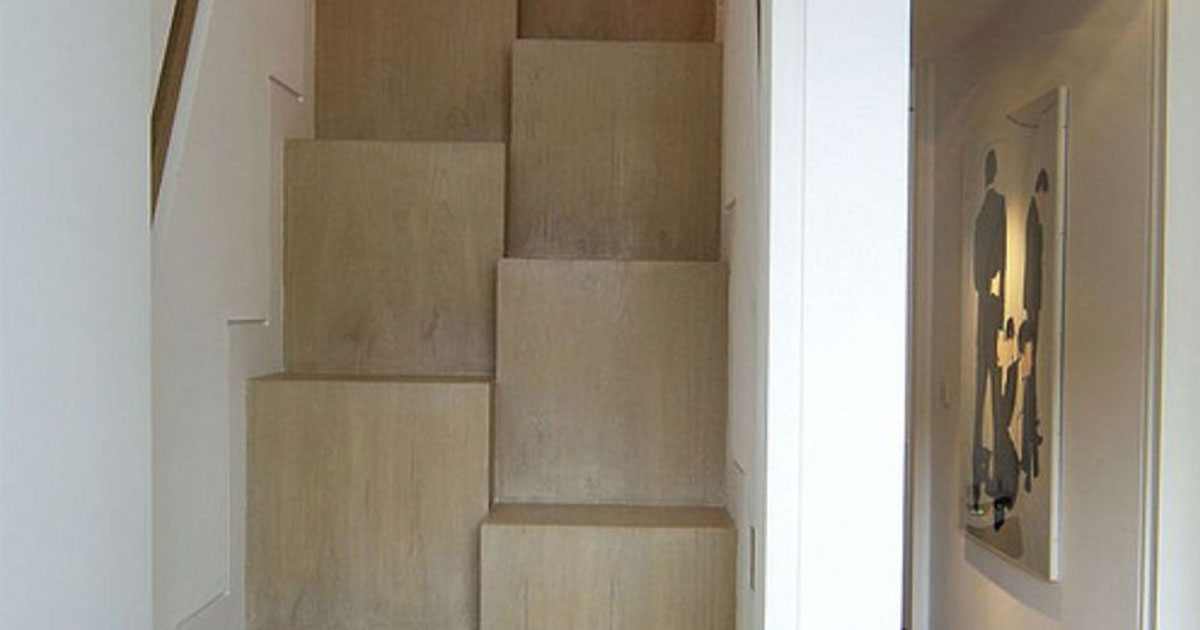
If you’ve spent any time on TikTok in the past few years, you may have come across a peculiar architectural feature called “witches’ stairs.” These unusual staircases, which gained viral popularity on social media, captured attention for both their distinctive design and the mystical myths that surround them. But despite their spooky nickname, witches’ stairs have nothing to do with actual witches or folklore. In reality, they’re a smart and stylish solution to a very modern problem: limited space.
Witches’ stairs—known more formally as alternating tread stairs—are a clever architectural invention that’s particularly useful in tight spaces like small homes, attics, lofts, and tiny houses. They offer a compact and practical alternative to traditional staircases and, when properly designed and constructed, can even enhance the look and feel of a space.
A Space-Saving Marvel
What makes witches’ stairs so special? The key is in the staggered design. Each step alternates, so rather than using a full-width tread, the stairs are divided into a left and right pattern that allows you to climb using just one foot per step. This layout reduces the overall footprint of the staircase while maintaining the rise and run needed for safe climbing. In a home where every square foot matters, that’s a big deal.
Author Scott Schuttner, in his book Basic Stairbuilding, explains it best: “The distance between treads on a given side of an alternating-tread stair is actually twice the unit rise, which gives you more free tread area and therefore a safer stair in theory.” Though they look unconventional, these stairs are often safer than you’d think—if used correctly.

Despite what some might assume, witches’ stairs meet U.S. building codes and safety regulations. While a traditional staircase is usually about 36 inches wide, a residential witches’ staircase typically measures between 27 and 30 inches. That’s enough to be functional, yet slim enough to fit into otherwise hard-to-use corners or vertical spaces.
The Origin of Witches’ Stairs
While TikTok brought these stairs into the public eye with a supernatural spin, their actual origin is far more practical. In 1985, an inventor named J.M. Lapeyre patented a metal version of the alternating tread stair. He envisioned it as a safer alternative to ladders in commercial and industrial spaces like warehouses and factories. Since then, similar stair designs have been used extensively on ships, oil rigs, and other compact workspaces. In those contexts, they’re often referred to as ship ladders or ship stairs.
The name “witches’ stairs,” however, took off much later—thanks to an urban legend that emerged on social media. According to the myth, these stairs were installed in homes during the 17th-century Salem witch trials to prevent witches from entering, under the bizarre belief that witches couldn’t navigate their uneven design. Some even credited Thomas Jefferson with popularizing the design, calling them “Jefferson stairs.” However, historical documents tell a different story. The design appears in an 1888 book titled Monckton’s One Plane Method of Hand Railing and Stair Building, long after the Salem trials and with no connection to the Founding Father.
Robin Briggs, a historian specializing in early modern witchcraft, dismisses the myth entirely. He states that there’s no historical evidence linking witches or superstitions to the use of these stairs. “The closest related belief,” Briggs says, “was that a witch couldn’t leave a room if a broom was placed over the doorframe.” So while the stories are fun, they’re more fiction than fact.
Not Just for Myths—They’re Functional and Stylish
Though they lack actual magical history, witches’ stairs are still enchanting in their own right. Their bold design makes them a unique visual feature in modern homes. Whether tucked into a cozy reading nook, leading to a loft bed, or connecting a tiny home’s upper and lower levels, they add a sense of character and creativity to any space. Some homeowners even use the extra vertical wall space around them to display books, art, or personal collections.
Their charm lies in how they merge functionality with aesthetic appeal. For people who want their homes to stand out while remaining practical, witches’ stairs are a perfect fit.
Final Thoughts
Witches’ stairs are a prime example of how design can be both innovative and beautiful. They prove that even the quirkiest ideas can have real-world applications. Whether you’re downsizing to a tiny home or just looking for a conversation-starting feature in your house, these space-saving stairs offer something special.
So, the next time you come across a photo or video of witches’ stairs online, you’ll know the truth: they’re not about superstition—they’re about smart design, creative thinking, and making the most out of every inch of space. And that might just be the most magical part of all.





